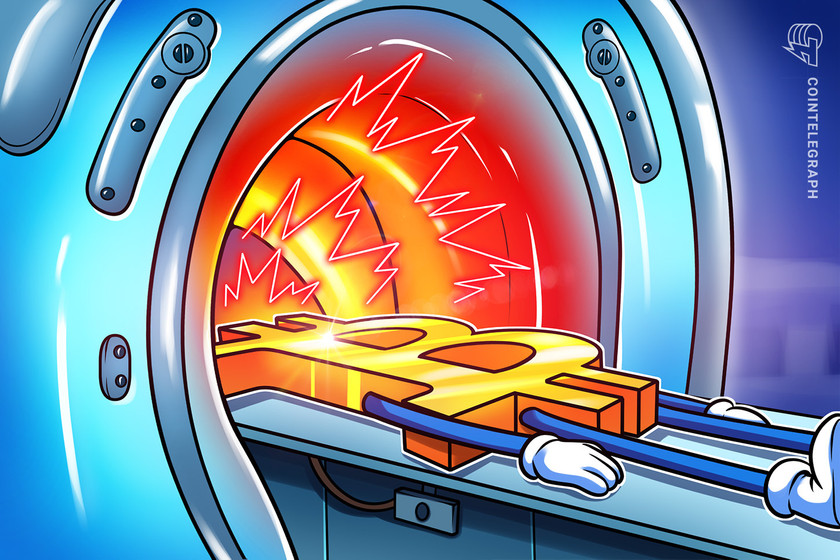$920B is the number to watch now that crypto’s trillion dollar total market cap is gone


The crypto market is taking a walloping, and there are three important reasons why BTC’s $380 billion valuation is a key support for the entire market.
Big round numbers always pique the interest of investors and the $1 trillion total crypto market capitalization is no exception. It’s a level that held for 48 days before collapsing on March 9. After a 16-hour negative 8.6% price movement, the indicator fell to $914 billion, its lowest level since Jan.13.


Concerns about the stability of the U.S. banking industry, specifically the downfall and subsequent closure of Silvergate Bank (SI) on March 8 and the shut down of Silicon Valley Bank (SVB) on March 10 by The California Department of Financial Protection and Innovation, are among the reasons for breaking below the $1 trillion capitalization support. Silvergate was a critical fiat gateway network for the most important cryptocurrency exchanges and intermediaries.
The California Department of Financial Protection and Innovation did not provide an explanation for SVB Bank’s closure. Nonetheless, it stated that the financial institution will be the first FDIC-insured institution to fail in 2023.
Silicon Valley Bank possessed more than $200 billion in assets and provided financial services to a number of crypto-focused venture firms, including Andreessen Horowitz and Sequoia Capital.
Don’t forget, however, the ongoing efforts of the U.S. Federal Reserve to curb inflation, which include increasing interest rates above 2% in August 2022 and reducing its balance sheet through asset sales. In addition to this, U.S. labor market data released on March 10 revealed the creation of 311,000 jobs in February 2023, supporting the notion that the Fed’s anti-stimulus measures require additional firepower.
The unexpected result of the central bank’s cautious stance is a greater likelihood of a longer and more severe economic downturn. Investors demanded a higher return for two-year treasury notes versus longer-term dated bonds, causing the inverted bond curve to reach its highest level in 40 years.
What is the significance of the $920 billion market capitalization?
A notable bounce occurred as total crypto capitalization reached $920 billion, indicating large buyers around that level, which may appear insignificant at first but is critical for Bitcoin (BTC), the leading cryptocurrency. To begin, one must understand that Bitcoin accounts for roughly half of total crypto capitalization when stablecoins are excluded.
As a result, Bitcoin’s $380 billion market capitalization serves as the foundation for the $920 billion total. Three reasons explain why such a level is critical from a valuation standpoint.
Bitcoin is still a top-20 global tradable asset, valued at over $380 billion, ahead of the giant retailer Walmart (WMT), international payment processor Mastercard (MA), and the highly profitable consumer discretionary Procter & Gamble (PG). It becomes more difficult to attribute failure after such a remarkable accomplishment.
Despite Bitcoin’s 50% decline in 12 months to $19,650, its performance is comparable to that of billion-dollar companies such as Credit Suisse Group (CS) down by 63%, First Republic Bank (FRC) 51%, Warner Bros. (WBD) 43%, and Intel Corporation (INTC) 43%.
Lastly, by maintaining its $380 billion capitalization, it remains the seventh largest global base money when compared to fiat currencies. For example, the Australian Dollar (AUD) has a monetary supply of $378 billion, while the Canadian Dollar (CAD) has a monetary supply of $220 billion. The Indian Rupee, with a monetary base of $500 billion, is the next potential target.
At the moment, the options put/call ratio is stable
Traders can gauge the market’s overall sentiment by measuring whether more activity is going through call (buy) options or put (sell) options. Generally speaking, call options are used for bullish strategies, whereas put options are for bearish ones.
A put-to-call ratio of 0.70 indicates that put option open interest lags behind the more call options and is therefore bullish. In contrast, a 1.40 indicator favors put options, which is a bearish sign.
Related: South Dakota gov vetoes bill excluding crypto from definition of ‘money‘


Since March 8th, protective puts have been in greater demand, indicating derivatives traders’ risk aversion. Aside from a brief overshoot on March 9 when the put-to-call ratio jumped above 1.50, nothing was out of the ordinary as the movement coincided with the Bitcoin price falling below $22,000.
The gap favoring the put options risk metric had been narrowing, indicating that even professional traders were finding themselves shorthanded as the crypto market continued to fall to new lows.
More importantly, the Bitcoin options market shows no signs of stress, which is encouraging given the immense pressure from the banking sector and the prospects of a dwindling economy.
The views, thoughts and opinions expressed here are the authors’ alone and do not necessarily reflect or represent the views and opinions of Cointelegraph.
This article does not contain investment advice or recommendations. Every investment and trading move involves risk, and readers should conduct their own research when making a decision.

































